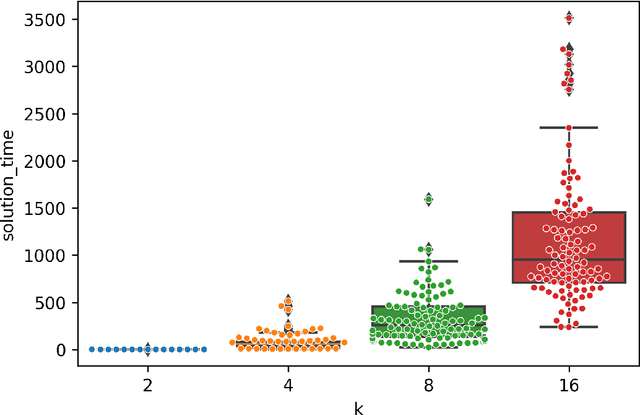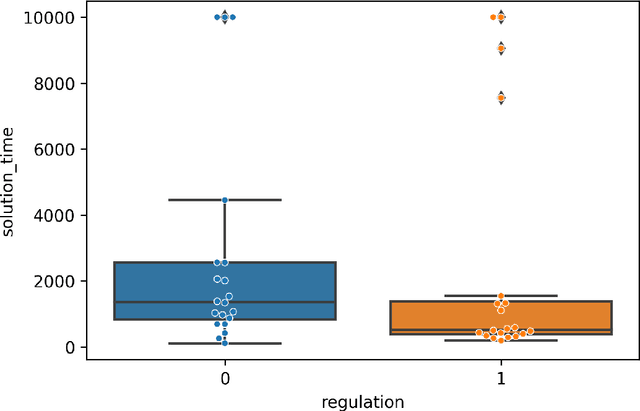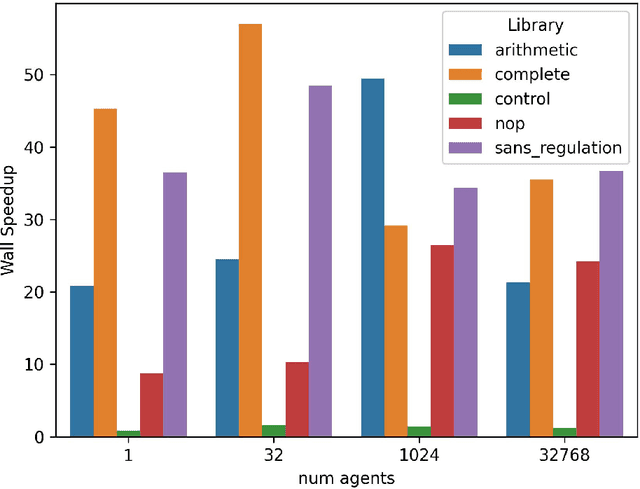Santiago Rodriguez Papa
Case Study of Novelty, Complexity, and Adaptation in a Multicellular System
May 12, 2024Abstract:Continuing generation of novelty, complexity, and adaptation are well-established as core aspects of open-ended evolution. However, it has yet to be firmly established to what extent these phenomena are coupled and by what means they interact. In this work, we track the co-evolution of novelty, complexity, and adaptation in a case study from the DISHTINY simulation system, which is designed to study the evolution of digital multicellularity. In this case study, we describe ten qualitatively distinct multicellular morphologies, several of which exhibit asymmetrical growth and distinct life stages. We contextualize the evolutionary history of these morphologies with measurements of complexity and adaptation. Our case study suggests a loose -- sometimes divergent -- relationship can exist among novelty, complexity, and adaptation.
SignalGP-Lite: Event Driven Genetic Programming Library for Large-Scale Artificial Life Applications
Aug 01, 2021



Abstract:Event-driven genetic programming representations have been shown to outperform traditional imperative representations on interaction-intensive problems. The event-driven approach organizes genome content into modules that are triggered in response to environmental signals, simplifying simulation design and implementation. Existing work developing event-driven genetic programming methodology has largely used the SignalGP library, which caters to traditional program synthesis applications. The SignalGP-Lite library enables larger-scale artificial life experiments with streamlined agents by reducing control flow overhead and trading run-time flexibility for better performance due to compile-time configuration. Here, we report benchmarking experiments that show an 8x to 30x speedup. We also report solution quality equivalent to SignalGP on two benchmark problems originally developed to test the ability of evolved programs to respond to a large number of signals and to modulate signal response based on context.
 Add to Chrome
Add to Chrome Add to Firefox
Add to Firefox Add to Edge
Add to Edge